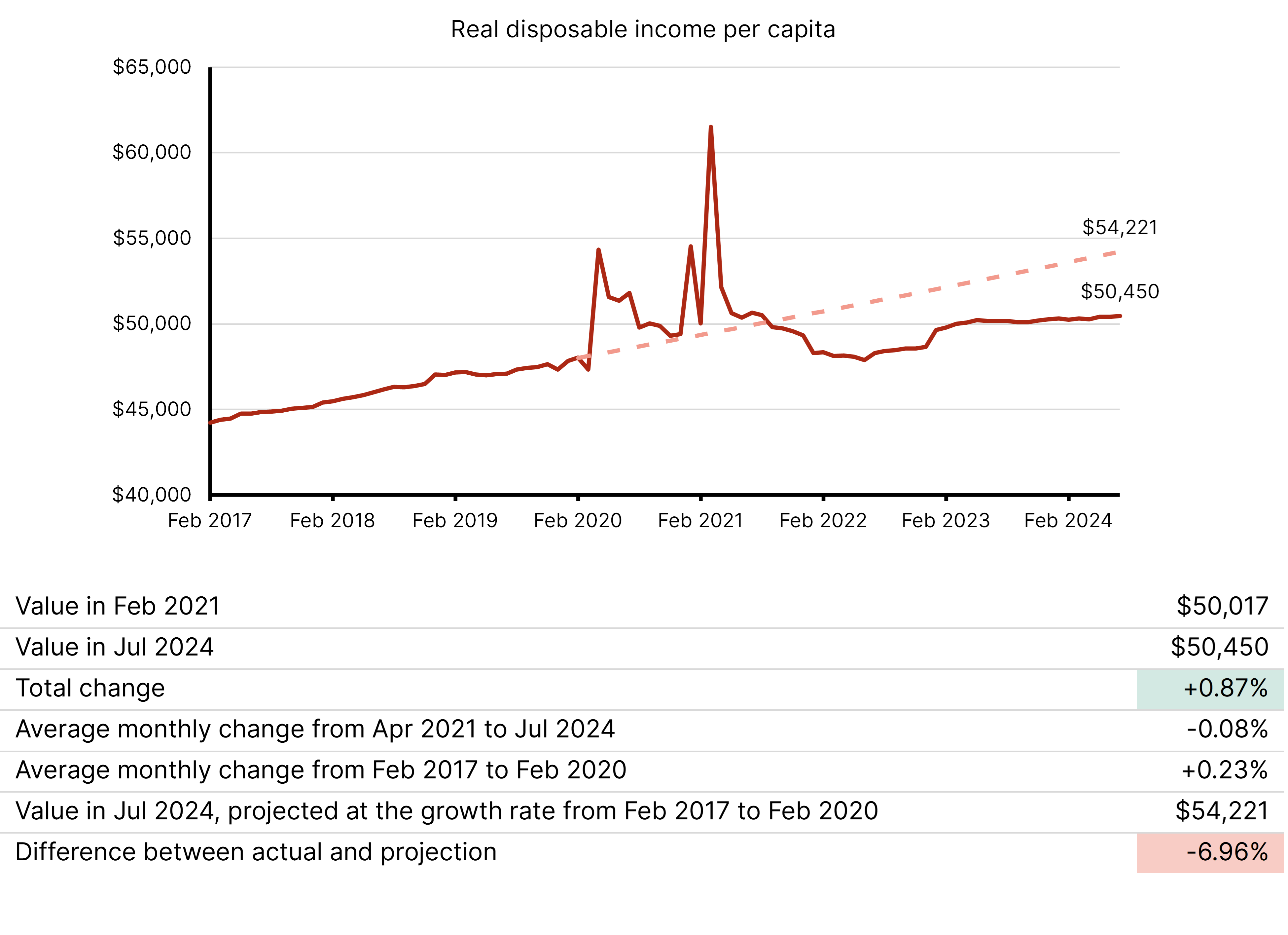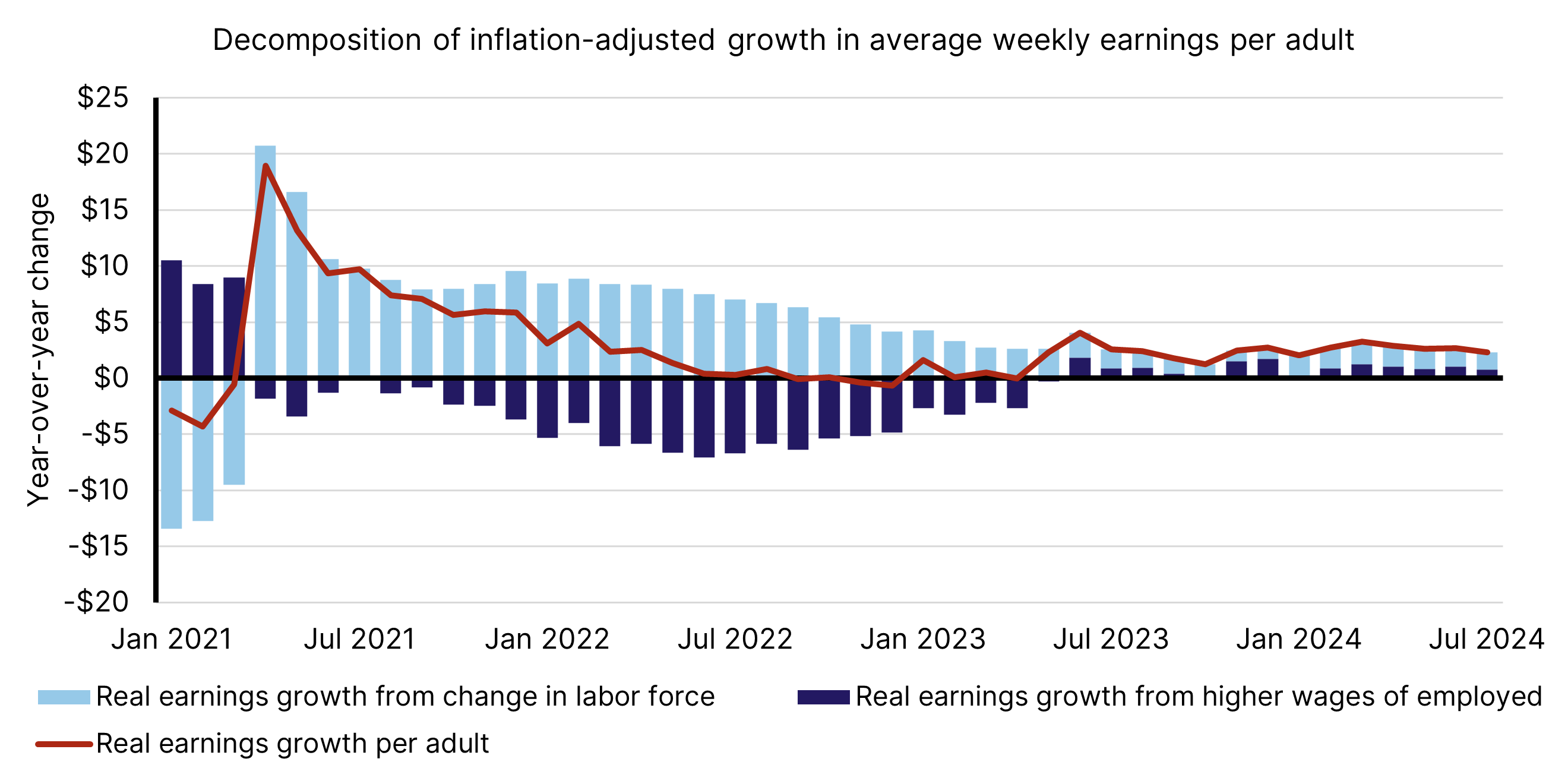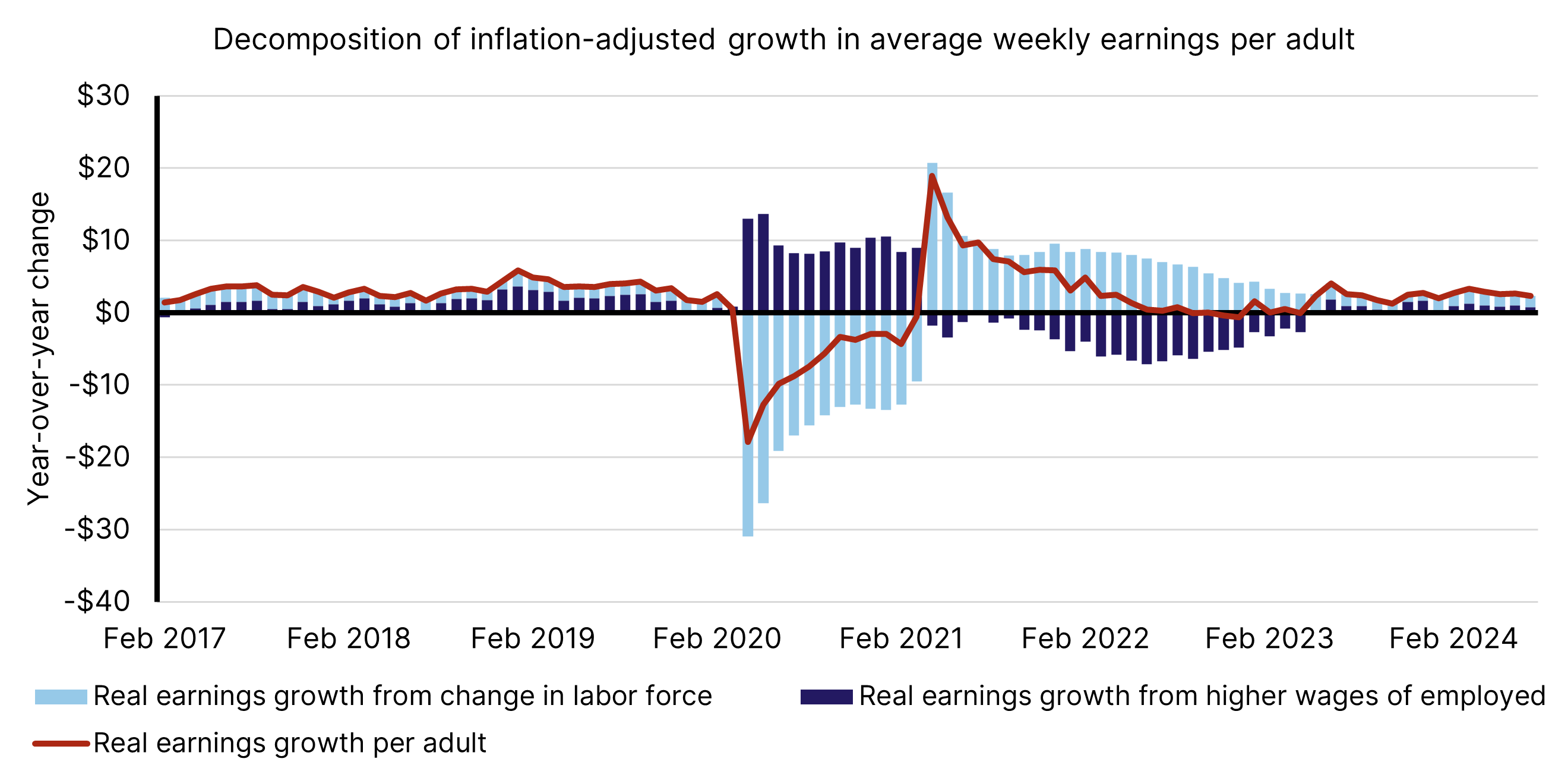Inflation has harmed working families under multiple measures
Today, Joint Economic Committee Vice Chairman David Schweikert released an issue brief explaining how the majority of hardworking Americans have seen their purchasing power eroded under the Biden-Harris administration. After accounting for multiple measures of income, JEC Republicans found that incomes have risen more slowly than prices since January 2021. This issue brief sets the record straight that Americans are worse off than they were three-and-a-half years ago in large part due to the current administration’s failed economic policies.
Real average weekly earnings
Real average weekly earnings reflect variations in the number of hours worked per week and are affected by the proportion of part-time workers, unpaid absenteeism, labor turnover, and more. The data shows that, per week worked, the average worker has seen a nearly 4 percent decline in wages after inflation. The value is more than 3 percent lower than it would be if wage growth had continued at the pre-pandemic rate.

Real disposable income per capita
Real disposable income per capita provides clear insight into the financial well-being of Americans. This measure shows the amount that individuals can spend, save, or invest. From February 2017 to February 2020, real disposable income per capita increased by 8.59 percent in total, with an average monthly growth rate of 0.23 percent. From February 2021 to July 2024, about half of the months experienced negative growth, but from February 2017 to February 2020, only about 17 percent did.

New entrants to the labor force account for the increase in income
Due to recovery from the pandemic, employment expanded dramatically from January 2021 to July 2024. Newly employed people would have zero income in one period and an income tens-of-thousands of dollars higher in the next. Any analysis counting new entrants to the labor force as the same as continuous job holders is inaccurate.
One way to distinguish between new entrants and continuous job holders is to consider average weekly earnings per adult, which modifies average weekly earnings to also include those in the population with no earnings.
When adjusting for inflation, JEC Republicans find that almost all of the growth in real earnings per adult can be attributed only to the positive effect of the labor force recovering from the pandemic.

The full picture of economic well-being is even more disparaging when considering the pre-pandemic economy. In the three years before the pandemic, wage growth for workers typically accounted for a greater share of average earnings growth per adult. A smaller labor force during the pandemic caused a large decline in wage growth, and the following positive effects on earnings came from the subsequent recovery of the labor force.

Due to its strong negative effect on the real wage growth for those employed, high inflation prolonged this recovery. A status quo approximately resembling the pre-pandemic composition has only recently returned, although the real growth in wages for working adults is still much lower on average than it was in the three years preceding the pandemic.
Conclusion
In contrast to the wage growth narrative of the Biden-Harris administration, stagnant real disposable income per capita and a nearly four percent decline in real average weekly earnings indicate a substantial decrease in economic well-being. Measures that fail to account for distributional effects across states and compositional effects in the labor force do not offer an accurate picture of the well-being of the average American. Most of the metrics JEC Republicans present suggest that, due to high inflation, real incomes have either stagnated or declined since January 2021. Therefore, claims that the income of the average worker is higher over the period after inflation are inaccurate.
Click here to read the full issue brief.